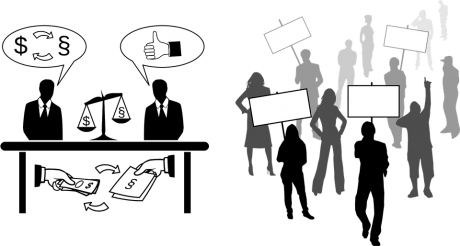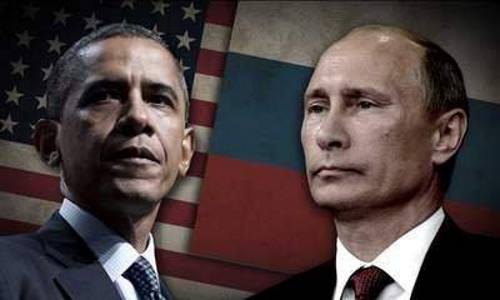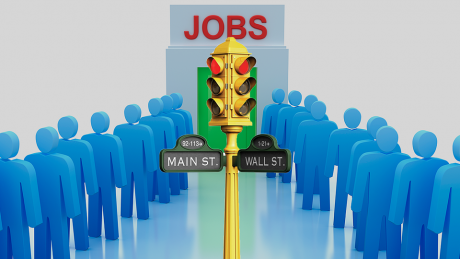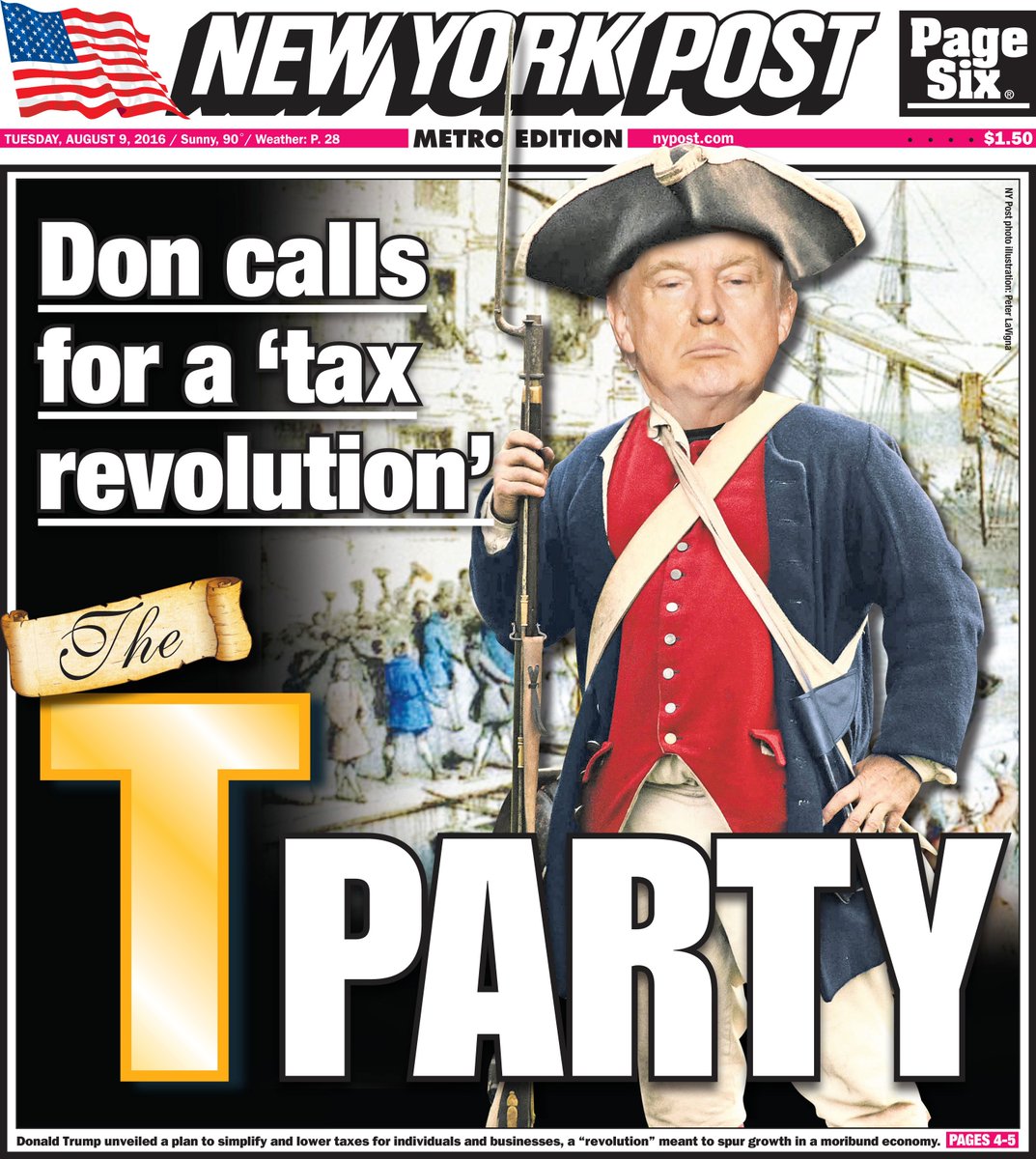 It isn’t just the politicians in Washington D.C. that are deeply corrupt. In this article you will read about two prominent mayors that have engaged in absolutely horrific behavior, and you will read about a sex scandal out in California that involved 24 different police officers sleeping with the same prostitute. The reason why I write about these things is not to gross you out. Instead, the goal is to get America to take a long look in the mirror. Ultimately, we aren’t going to turn this country around by electing the right president, because the truth is that the biggest problem with this nation is in our own hearts. Until we get our hearts right, nothing is going to really change. (Read More....)
/
It isn’t just the politicians in Washington D.C. that are deeply corrupt. In this article you will read about two prominent mayors that have engaged in absolutely horrific behavior, and you will read about a sex scandal out in California that involved 24 different police officers sleeping with the same prostitute. The reason why I write about these things is not to gross you out. Instead, the goal is to get America to take a long look in the mirror. Ultimately, we aren’t going to turn this country around by electing the right president, because the truth is that the biggest problem with this nation is in our own hearts. Until we get our hearts right, nothing is going to really change. (Read More....)
/
Dodd-Frank Law Endangers Deposits
Seven years ago, the week before the Dodd-Frank Act was voted on, the Rant dissected the bill as proposed. The only redeeming feature, in my opinion, in Dodd-Frank was the limitations it would place on derivative holdings by banks. The only real changes done to Dodd-Frank as proposed was to eliminate that limitation and subsequent addendums have made it virtually impossible to reconcile the banking system from the Great Depression to 2009 to the system we are stuck with today.
Earlier this week, columnist Robert Samuelson looked back on Dodd-Frank and the implications the provisions are going to have in hamstringing the Federal Reserve's responses to any future economic crisis. Samuelson took the position that Dodd-Frank as it currently stands will enhance any future financial crisis leading to more panic than was seen in 2008.
"In Dodd-Frank, Congress makes it much harder for the Fed to act as a lender of last resort. The Treasury Secretary must approve all nonbank loans, there can be no nonbank programs for a single borrower, collateral requirements are toughened and loans must be disclosed within a year. Some of these may be sensible alone; together they create an obstacle course for crisis lending."
The one item both Samuelson and I agreed upon was the requirement the banks hold additional cash reserves to help weather a panic. But some of that requirement has been abrogated by the Federal Reserve policy of being the holder of cash since it prints the paper. But the stress tests designed to determine whether or not a bank can survive an initial panic from a problem in the sector is flawed still because of the derivative load banks hold and the "value" assigned by regulators to national debt holdings.
It is true those holdings might have more quality value than other holdings but clinging to government debt or counting derivative paper as an asset is deeply flawed thinking because it does not take into account the changing landscape of global economic woes.
Each central bank can "make good" on the debt load issued by governments it represents by simply printing more fiat. But as should have been learned from the Weimar Republic's money-printing scheme to pay off World War I debt as Neville Chamberlain insisted upon in blaming Germany for the war--there is fiat and there is fiat and specifically allowing any entity to measure debt in its own fiat without some value oversight maintenance is foolhardy. In the Weimar case it led directly to the ascension of Adolph Hitler and was the root cause of WWII.
Samuelson summed up this contention pretty well, even if he didn't go so far as to see violence as a result. He merely called it 'panic' and failed to tie in violence that arises when panic is assuaged fairly quickly. "But a financial crisis-a panic-is by its very nature a rapidly moving and usually unpredictable event. [Emphasis mine.] Unless the crisis is dealt with decisively, it could become a monster that cannot be contained."
During the Great Depression and the ensuing bank run that decimated people's faith in the system, the Glass-Steagall Act specifically limited banking activities into commercial banking and brokerage or investment banking. This put the local community bank back on a solid footing and helped restore some public faith that their deposits were going to be there when the depositor asked for them.
But the government later instituted the Federal Deposit Insurance Corporation (FDIC). One of its chief functions, without most Americans being aware of it, was that it made all banked money the property of the bank and the depositor merely a creditor of the institution. This was bad enough, but later on Bill Clinton dismantled the restriction by repealing Glass-Steagall. The third nail in the banking system that insured a financial crisis would arise came when Bush the Second signed off on the Frank proposals that prevented lending institutions from even ASKING whether or not a potential home buyer had the means to repay the loan he was receiving. Instead the lending institutions were limited to judging if the borrower had a WILLINGNESS to repay the loan.
That led to a massive bundling surge in derivatives where worthless or extremely doubtful loans were pawned off on an unsuspecting buyer who was hoping he had more winners than losers for a lesser price than face value.
The problem with derivatives is they are essentially bets. But in the Lehman case they had not balanced the bets and were caught shorthanded. Their mistake nearly collapsed the system with a mere $60 billion of worthless derivatives. The bad news is today the Bank of International Settlements figures there are $2.8 quadrillion in corporate derivatives floating in the system. That's equal to 40 years of the entire global economy.
This is why, in the next financial meltdown that is inevitable from the printing press run of the central bankers, the panic Samuelson noted will result in violence. Everybody will be losers, even if you made a winning bet because there will be no solid financial system or tangible value assets to fall back on--it is all paper.
Curiously, both of America's political parties made passing reference to the problem in their conventions. Both have planks in which they claim to want to address the Dodd-Frank problem and the GOP even goes as far as reinstating the Glass-Steagall provisions. This will cause turmoil in American streets by revamping the banking system again.
But just a few questions from me to the politicians: If you both claim to want this, why haven't you done something with it in the 20 years since Clinton dismantled the separation provisions? Better yet, if you both want a reform, why hasn't there been some across-the-aisle accord dismantling a system where the average American was duped? Could it be campaign donations would dry up because the financial sector doesn't want that kind of a hit?
The political system needs the financial sector. It has done everything to protect it, particularly since the Great Recession. You should know that the pols created the crisis by failing to learn the lessons of 1929 and 1933. Today's financial deadweight we are supporting is much bigger and more intricate than it was in 1929.
Your "wealth" is a only mirage.
"I have sworn on the altar of God eternal hostility to every form of tyranny over the mind of man."--Thomas Jefferson
contact mccrant@gmail.com
Stats Don't Fit Jobs Report
Did you notice how the markets roared on Friday because of the employment report? Yes, yes, yes indeed! Happy days are here again and the Fed can raise interest rates.
Every finance report in the country on Friday was extolling the 255,000 jobs added to the economy and a 2.6% increase in salary from a year earlier.
The most egregious expounder of the jobs report was the Wall Street Journal. Its top front-page story for the weekend edition was "Robust Hiring Spurs Fed Watch." The first five paragraphs of the story were how the U.S. economy clobbered every expectation and "spurred relief after an ugly May jobs report, a dim first-half U.S. growth reading, falling corporate profits and retreating business spending."
I have a friend who has warned me repeatedly about the proper way to read any story. His most consistent assertion is, "Everything up to the 'but' is a lie and everything after the 'but' is the truth." Going through the WSJ headline story, the 'but' didn't occur until the middle of the fifth paragraph near he bottom of the second column. "But an improving labor market doesn't entirely square with other data showing a deep slowdown in overall economic growth since the end of 2015." The report then states, "American companies, dogged by shrinking profits, have cut investment for three straight quarters. Alongside steady hiring, that has led to slumping labor-productivity growth."
This little chiller was followed by the real assessment of the labor market. "Productivity is a key to rising living standards as steady gains are needed to support higher incomes without sparking inflation."
In looking over the numerous data releases from the government, don't be surprised if this jobs report turns out to be a creation of "seasonal adjustment" at Labor more than any other factor.
In an AP report from Friday Chris Rugaber stated, "July's robust jobs gain may be enough to reassure investors--and perhaps Federal Reserve policymakers--that the economy will keep growing at a slow but steady pace."
One percent growth is 50% less than the Fed's stated target for raising interest rates. One percent should not be enough to change anyone's mind except maybe the nimrods who comprise the Federal Reserve's Open Market Committee. One percent growth is not going to alter anything except bureaucratic and legislative policy.
The key in all the numerous items is in manufacturing. Manufacturing continues to struggle and is an admitted "weight on hiring." You and I are supposed to believe that this weight is offset by an astonishing 255,000 hirings in July?
The problem, unaddressed because it is unmentionable in Washington, is the effect the numerous additional laws with attendant bureaucratic rules and regs are having on business combined with the disastrous anxiety caused by the Oval Office.
Take the adopted home state of Barack Obama and the home state of Hillary Clinton, Illinois, as an example. Officially, between 2000 and 2010, the number of employed people in Illinois declined by 115,000 or 1.5%. The number of manufacturing jobs in Illinois was still down by more than 310,000. At the same time Illinois gained 347,000 people. The result of 'seasonal adjustments' is Illinois' unemployment rate went from 3.4% to 6.5%. Since 2010, however, during the recovery Illinois has recouped a miserly 23,000 manufacturing jobs and the unemployment rate is hovering around 4.7%.
The main cause of the state's last-place ranking for business climate is summed up as "failing in friendliness, ease of starting a business, employment prospects, labor and hiring rate, tax code and licensing."
Anxiety in business owners as well as consumers is adding to the downward cycle of the economy in this country. Anxiety has not been relieved in almost 15 years now. Without businesses hiring, consumers have less to spend, without consumers spending, businesses rid themselves of wage earners which then add to the number of consumers with less disposable income.
Add onto that the mountain of red tape created by government at all levels since 9-11 and America's economic neck is in a noose.
The spooky part is the market is still lagging behind the Fed's additions to the money supply based on the May 2009 lows. The Fed has gone from a balance of $800 billion in 2007 to $4.5 trillion today, the markets have gone up just under 300% since the May 9 lows. If the markets retreat, all that baseless money backed up in the Fed will come through as inflation.
Inflation will only add to the anxiety issue and make any interest rate hike a crushing blow for struggling private business in all sectors.
"I have sworn on the altar of God eternal hostility to every form of tyranny over the mind of man."--Thomas Jefferson
/
/
/
/
Man Shoots Deputy in Helicopter That Was Flying Over His Minnesota Property




 Happy days are here again? On Friday, the mainstream media was buzzing with the news that the U.S. economy had added 255,000 jobs during the month of July. But as you will see below, the U.S. economy did not add 255,000 jobs during the month of July. In fact, without an extremely generous “seasonal adjustment”, the number of jobs added during the month of July would not have even kept up with population growth. But the pretend number sounds so much better than the real number, and so the pretend number is what is being promoted for public consumption. (Read More....)
Happy days are here again? On Friday, the mainstream media was buzzing with the news that the U.S. economy had added 255,000 jobs during the month of July. But as you will see below, the U.S. economy did not add 255,000 jobs during the month of July. In fact, without an extremely generous “seasonal adjustment”, the number of jobs added during the month of July would not have even kept up with population growth. But the pretend number sounds so much better than the real number, and so the pretend number is what is being promoted for public consumption. (Read More....)

 Hillary Clinton’s health is starting to become a major political issue, and there are many that believe that her health problems may force her to drop out before we even get to election day. On Sunday evening, the Drudge Report ran a photo of Hillary struggling to get up a set of stairs along with this headline: “2016: Hillary conquers the stairs”. Well, it turns out that particular photo was about six months old, but it sparked a much deeper debate about Hillary Clinton’s health. As you will see below, Clinton has been having seizures even while in public, she has been regularly having horrible coughing fits, she has a very large hole in her tongue that has not been explained, and she has been falling down way too often for a woman her age. No matter whether you are for her or against her, it should be apparent to everyone that this is a woman that has some very serious health issues. (Read More...)
Hillary Clinton’s health is starting to become a major political issue, and there are many that believe that her health problems may force her to drop out before we even get to election day. On Sunday evening, the Drudge Report ran a photo of Hillary struggling to get up a set of stairs along with this headline: “2016: Hillary conquers the stairs”. Well, it turns out that particular photo was about six months old, but it sparked a much deeper debate about Hillary Clinton’s health. As you will see below, Clinton has been having seizures even while in public, she has been regularly having horrible coughing fits, she has a very large hole in her tongue that has not been explained, and she has been falling down way too often for a woman her age. No matter whether you are for her or against her, it should be apparent to everyone that this is a woman that has some very serious health issues. (Read More...) It isn’t just the politicians in Washington D.C. that are deeply corrupt. In this article you will read about two prominent mayors that have engaged in absolutely horrific behavior, and you will read about a sex scandal out in California that involved 24 different police officers sleeping with the same prostitute. The reason why I write about these things is not to gross you out. Instead, the goal is to get America to take a long look in the mirror. Ultimately, we aren’t going to turn this country around by electing the right president, because the truth is that the biggest problem with this nation is in our own hearts. Until we get our hearts right, nothing is going to really change. (Read More....)
It isn’t just the politicians in Washington D.C. that are deeply corrupt. In this article you will read about two prominent mayors that have engaged in absolutely horrific behavior, and you will read about a sex scandal out in California that involved 24 different police officers sleeping with the same prostitute. The reason why I write about these things is not to gross you out. Instead, the goal is to get America to take a long look in the mirror. Ultimately, we aren’t going to turn this country around by electing the right president, because the truth is that the biggest problem with this nation is in our own hearts. Until we get our hearts right, nothing is going to really change. (Read More....)






No comments:
Post a Comment